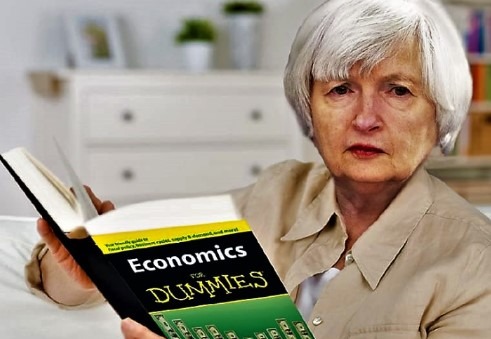Headline CPI 2.2% y/y, in line with expectations but down from August
- expected 2.2%, prior 2.6%
Core 2.0% y/y, and ditto, in line with expectations but down from August
- expected 2.0%, prior 2.4%
- this is ex food
Core-core 1.6% y/y, in line with expectations and an unchanged rate from August
- expected 1.6%, prior 1.6%
- this is ex food and energy and is the closest to the US measure of core inflation
Will it be 'two out of three ain't bad?' for the Bank of Japan? The thing is that 'core-core' inflation is the one to watch, its less subject to cost-push (bad inflation from the BoJ perspective) and more to demand-pull ... 'good' inflation according to the BoJ).
Don't know what I'm on about? See below.
****
Tokyo area inflation data:
- National-level CPI data for this month will follow in about three weeks, it takes longer to gather and collate the national data.
- Tokyo CPI is a sub-index of the national CPI
- It measures the change in prices of goods and services in the Tokyo metropolitan area
- Its considered a leading indicator of national CPI trends because Tokyo is the largest city in Japan and is a major economic hub
- Historically, Tokyo CPI data has been just slightly higher than national Japan CPI data. The cost of living in Tokyo is a touch higher than in most other parts of Japan. Higher rents, for example
****
---
Cost-push inflation and demand-pull inflation are two types of inflation that arise from different economic factors. Here's a comparison between the two:
Causes:
- Cost-Push Inflation: Cost-push inflation occurs when there is an increase in production costs, such as wages, raw materials, or energy prices. These cost increases lead to a decrease in the supply of goods and services, causing prices to rise.
- Demand-Pull Inflation: Demand-pull inflation occurs when there is an increase in aggregate demand for goods and services. This increase in demand outpaces the economy's ability to supply goods and services, resulting in upward pressure on prices.
Key Drivers:
- Cost-Push Inflation: The main drivers of cost-push inflation are factors like rising labor costs, increased production costs due to higher commodity prices, or government regulations leading to increased costs for businesses.
- Demand-Pull Inflation: Demand-pull inflation is driven by factors such as increased consumer spending, government spending, investment, or expansionary monetary policies that stimulate aggregate demand beyond the economy's productive capacity.

I'm next in line at the library for this book



